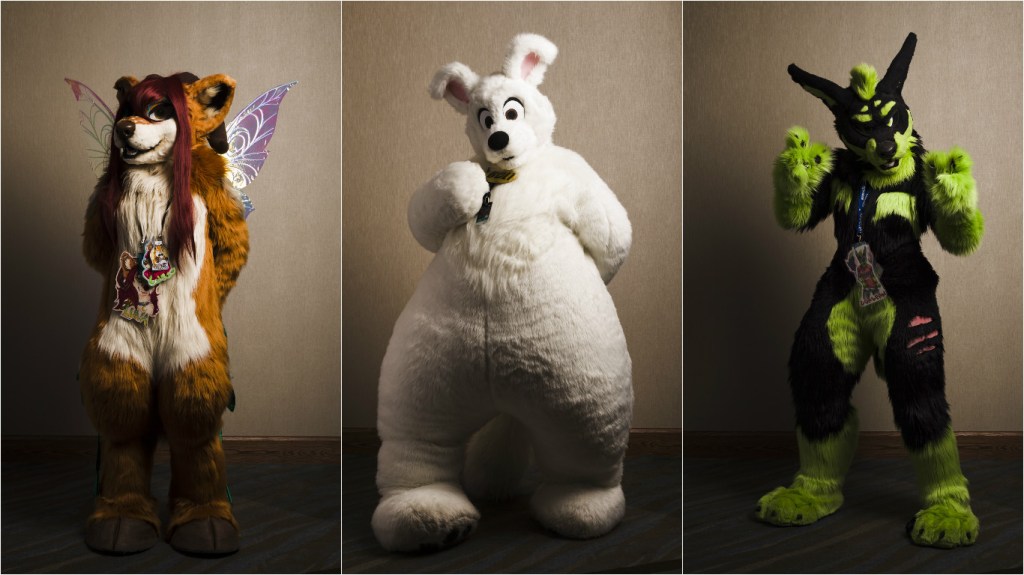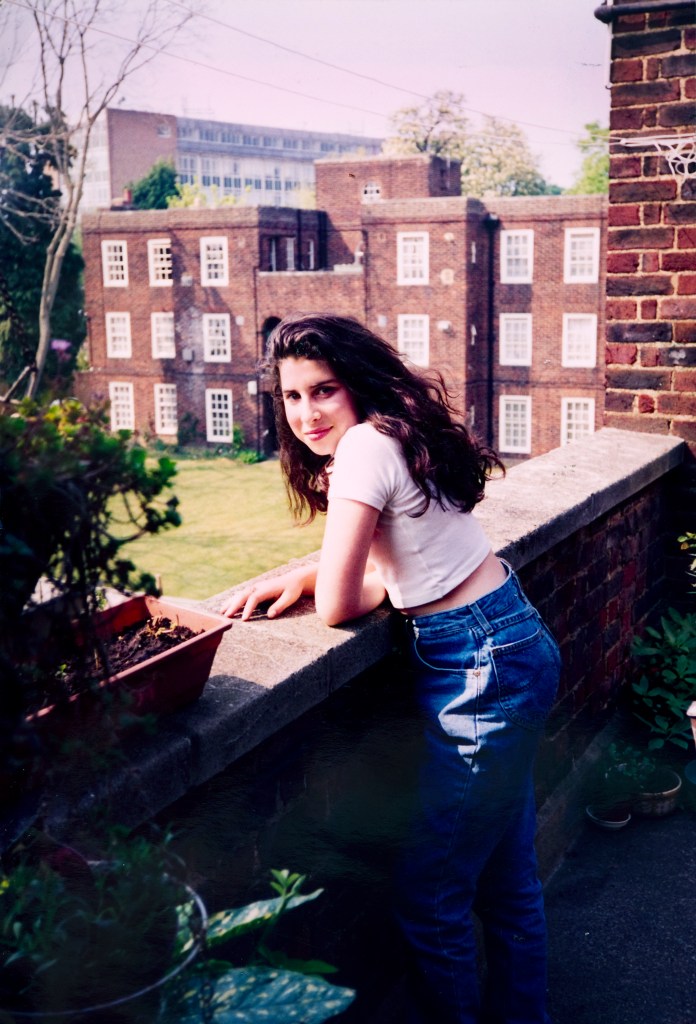
All images courtesy Garry Glowacki
This post originally appeared on VICE Canada
There is a theory that it takes 10,000 hours of practice to become a master at something.
Videos by VICE
Looking at the scores of paintings and drawings covering the walls of The Bridge office in downtown Brampton, Ont.—all of which were done by Canadian prisoners—you’d think you were standing in the lobby of the Ontario College of Art and Design.
This stuff is good. Like, gallery good. “Master of the craft” good.
Curator Garry Glowacki is executive director at The Bridge, an organization that helps ex-offenders reintegrate into society after release from custody.
After more than 20 years of working with this population, he knows firsthand the power that art can have in someone’s life. And as an ex-con who struggled with a heroin addiction himself, he also knows the effects that jail can have on a person, both physically and psychologically.
Now, Glowacki is holding a gallery show to share his art collection with the community—to give them a glimpse into the humanity of those behind bars, many of whom struggle with mental health and addictions.
“We want the men we work with to be seen as people,” Glowacki says. “They have talent and skills… far more than they’ve had a chance to show.”
While some of the pieces featured in the show contain blatant references to or reflections of jailhouse life—like gang insignia or the view from a cell—others are more metaphorical. Many focus on nature, or portraits of family members or friends. Some are dark and uncomfortable. Others are heartbreakingly childlike.
After a sit-down with Glowacki for a preview of the show, VICE reached out to some of the artists and people who knew them to get a glimpse into the stories behind their art:
(The show From The Inside Out will run through the month of November at the Beaux-Arts gallery in Brampton, with a reception taking place on November 24.)
“A Canadian Prison Cell” by Peter Collins
Collins was well known across Canada as a prolific artist and advocate for prisoner rights. The Kingston Penitentiary inmate died last year of cancer, at 53 years old. He was denied compassionate release to spend his final days in a hospice, and instead died in his cell—on year 32 of a life sentence for killing a police officer during a botched robbery.
His older brother Christian Collins ran a website for Peter during the later years of his incarceration that showcased his art to those on the outside. Peter, who of course did not have internet access in prison, would snail mail his pieces to Christian who would then scan them and put them up online.
“Sometimes it was difficult [seeing the art],” Christian told VICE in a recent phone interview. “There’s another piece similar to [‘A Canadian Prison Cell’] where he paints a silhouette of five or ten cells. And they’re two-person cells with three people in them… it’s an eye-opener. You’re sort of imaging yourself if you were one of those three people in those tiny cells. He was good at that, showing what it was like in a Canadian prison.”
He hopes that people viewing the art show will realize that our prisoners are more than convicts—they are people’s siblings, and partners, and children.
“Denial” by James Anthony
A year after he signed his name on this dark drawing, Anthony was sentenced to life in prison for the first-degree murder of Cindy Jamieson, who was killed in a brutal sexual assault in Hamilton in 2002. He lost an appeal of that conviction in 2007.
“Crunchie” by Terry Baker
Baker, 30, died by suicide this summer, while in solitary confinement in the same Kitchener women’s prison where Ashley Smith died back in 2007. She was serving a life sentence for murder. Baker made this drawing for a volunteer who had gifted her a chocolate bar, as a way of saying thank you.
That volunteer, Adelia Moura, can vividly remember the day she brought her that treat so many years ago: “I had to go through a lot of red tape to bring that in. And she had to eat it in there with me, because it would cause a physical fight.”
The chocolate bar was part of a Christmas wish list the young girl had written out—and Moura, who tutored girls in the youth facility where Baker was being held at the time (though she would ultimately be sentenced as an adult), remembers being struck by how childlike it was.
“My child could’ve written it up. She wanted books, she wanted music. Certain sweaters. Her favorite color was blue. She was writing it out like a normal Christmas list…and it was heartbreaking because you knew she’d never have that. At 16, she looked and acted like a normal 16-year-old. You’d never think…” she trailed off.
When Moura learned that Baker had taken her life in custody, she was heartbroken—though she’d known that Baker had long struggled with mental health issues and self harm, and had attempted suicide previously.
Baker was convicted of a heinous crime, Moura knows that. But she hopes that people viewing her art will get a glimpse into the vulnerable human side of her as well.
“I remember one day, we were sitting [in a room] and we could heard a young girl crying in the next room,” Moura said. “Terry knocked on the wall and said to her ‘it’s OK, you’re going to be OK.’”
“Girls” by Jericka Petten
Glowacki recalls a heartbreaking conversation he had with the artist around her 17th birthday. She was crying, he said, because she was worried she would now be “too old” for her clients. She was a sex worker, struggled with addictions, and cycled in and out of custody. Her paintings—of girls’ faces, then wrecked with paint—reflect her complicated life. That she has since passed away—she too died by suicide in 2010, Glowacki explained, at the age of 23, makes it all the more tragic.
“Many of us who worked with her over the years fondly and sadly remember Jerricka and how much we all really liked her,” Glowacki noted in a tribute that will hang next to her artwork. “While she couldn’t change her own life, she changed many of ours.”
“Kingston Pen” by Brian Martland
This large scale painting was done on the bed sheet in his cell at the Kingston Penitentiary. He wasn’t allowed a canvas in segregation, so he improvised. An embroidered angel is seen hanging in the top-right corner—a gift his mom had given him to hang onto during his sentence.
“It’s absolutely cruel, it’s absolutely inhumane, and that’s what my artwork is about,” Martland told VICE in a recent phone interview. “The whole system basically beats you down… it’ll kill your soul, your spirit. It takes a big toll on your health, your body.”
Another drawing is a self-portrait, and shows Martland with tattoo-covered arms. A smaller one in the same frame shows the mechanics of a cassette player that Martland says he took apart to turn into a tattoo machine in prison. Today, on the other side of the bars, Martland is on parole and works at a tattoo shop.
The system has destroyed his family and his life, he explained—but he is trying his hardest day by day. And his art offers him an outlet.
“I am an accomplished artist,” he said. “It offers me a release of my anger…and tortured soul.”
Tom Campbell
Tom Campbell’s paintings are detailed depictions of nature; scenes he realistically would never have been able to see from the confines of his cell. The tools he uses (paints, canvases) are reflective of the more art-friendly federal prison system, Glowacki points out. In provincial institutions, access to art supplies is far more limited. You are lucky to get a pencil and paper.
Wayne Forest
Wayne Forest is one of Glowacki’s most prolific featured artists. One series, which he calls the “angry birds,” is based on a husband and wife.
“I do a lot of what I just call free form,” he told VICE in a recent phone interview. “I just go in my head, and start sketching and see what comes from it.”
He said he began drawing as a child, but then stopped when he began struggling with alcohol abuse at age 17. When he was in jail, he said he used essentially just a pencil and paper—nothing else.
Today, out of custody, he credits his passion for art—and the freedom of expression it allows him—with getting him on the “straight and narrow.”
He has a pile of close to 200 illustrations, he explained. Much of his work is inspired by native art. Some pieces he sees through from beginning to end, while others might end up set aside for a while until he is ready to finish the design. And sometimes, he says, that allows him to get a new perspective—both on his art, and on life.
“Some stuff I’ll draw when I’m angry, but then I’ll look at it a couple weeks later and think ‘holy shit, what was I thinking back then?’” he said.
Jesus Please Release These Chains
Glowacki can’t remember who drew this one, but it seems to perfectly encompass the work they do at The Bridge. It hangs prominently on the wall above a community worker’s desk in their downtown Brampton office. Like this one, some of the pieces are anonymous. They were either never signed, or the artist’s name has long been forgotten. Many were passed down or inherited when other provincial prison art programs (like Brantford’s Prison Art) shut down.
Follow Molly Hayes on Twitter.



